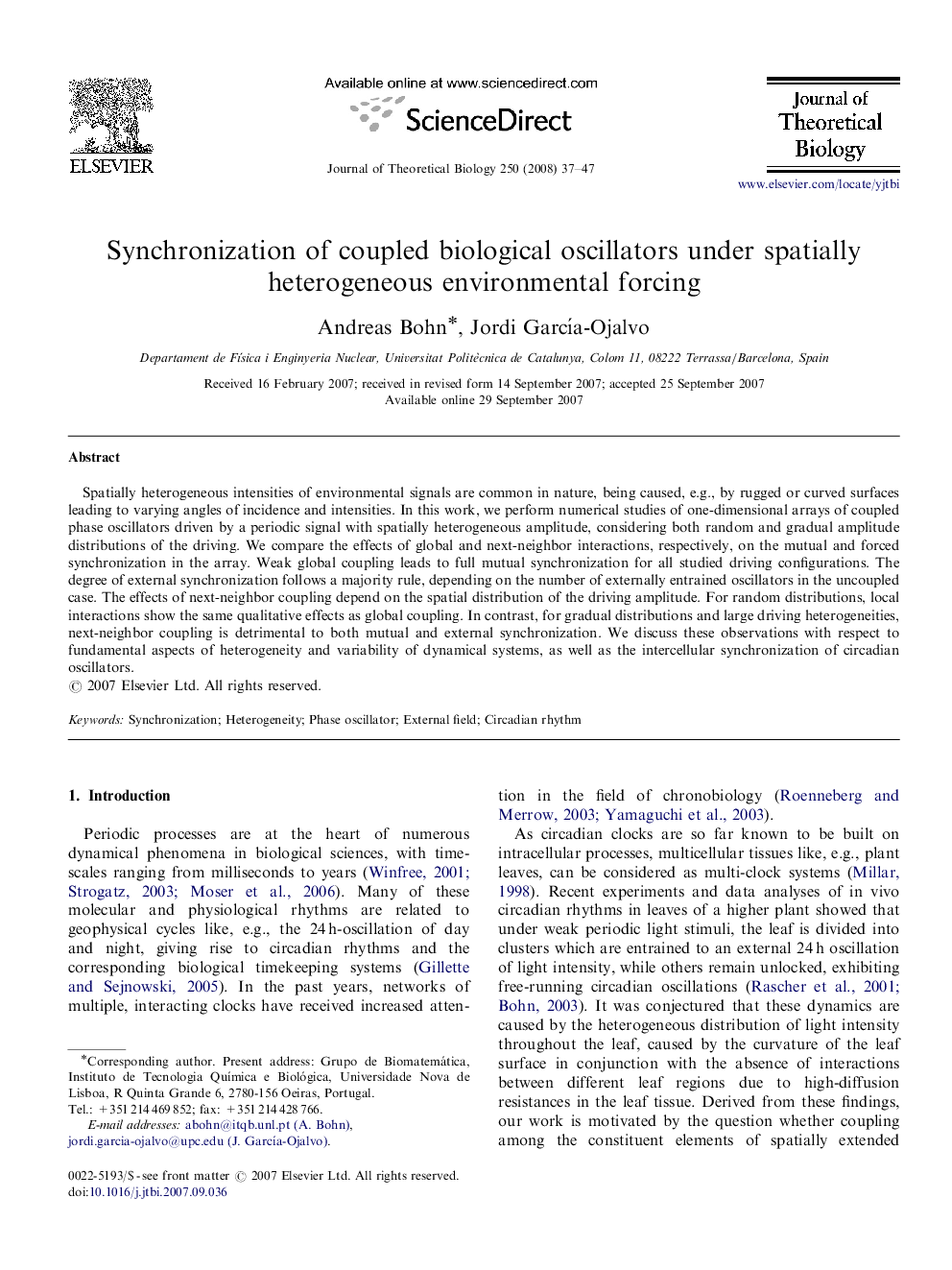| Article ID | Journal | Published Year | Pages | File Type |
|---|---|---|---|---|
| 4498737 | Journal of Theoretical Biology | 2008 | 11 Pages |
Abstract
Spatially heterogeneous intensities of environmental signals are common in nature, being caused, e.g., by rugged or curved surfaces leading to varying angles of incidence and intensities. In this work, we perform numerical studies of one-dimensional arrays of coupled phase oscillators driven by a periodic signal with spatially heterogeneous amplitude, considering both random and gradual amplitude distributions of the driving. We compare the effects of global and next-neighbor interactions, respectively, on the mutual and forced synchronization in the array. Weak global coupling leads to full mutual synchronization for all studied driving configurations. The degree of external synchronization follows a majority rule, depending on the number of externally entrained oscillators in the uncoupled case. The effects of next-neighbor coupling depend on the spatial distribution of the driving amplitude. For random distributions, local interactions show the same qualitative effects as global coupling. In contrast, for gradual distributions and large driving heterogeneities, next-neighbor coupling is detrimental to both mutual and external synchronization. We discuss these observations with respect to fundamental aspects of heterogeneity and variability of dynamical systems, as well as the intercellular synchronization of circadian oscillators.
Related Topics
Life Sciences
Agricultural and Biological Sciences
Agricultural and Biological Sciences (General)
Authors
Andreas Bohn, Jordi GarcÃa-Ojalvo,
